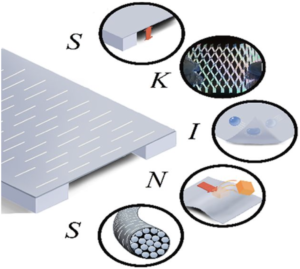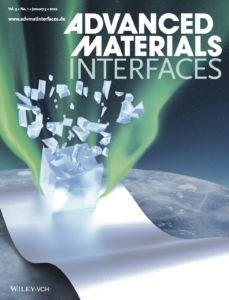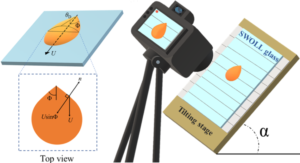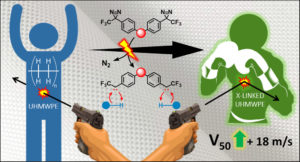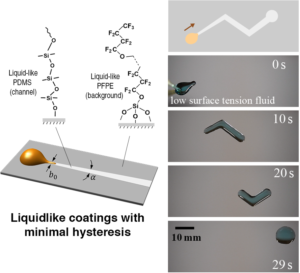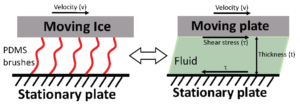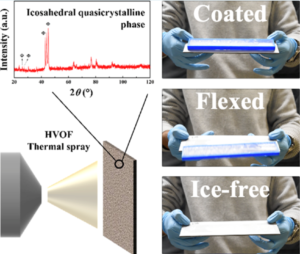Qimeng joins the DREAM Lab
We are pleased to welcome Qimeng Yang to the DREAM Laboratory. Qimeng did his MASc at the University of Alberta with Prof. Xuehua Zhang, and received his BS in Materials Engineering from University of Science and Technology Beijing. Qimeng is co-supervised by Dr. Ali Dolatabadi here at the University of Toronto and will be developing… Read more »
Kirigami work published!
Sonia’s excellent study using Kirigami surfaces as a platform technology to lower the adhesion of many different fouling substances, including ice, wax, mud, and a bio-foulant simulant, has been published in ACS Applied Materials & Interfaces! We call this technology SKINS: Suspended (allowed to flex and mimic the deformation of wrinkling films) Kirigami (the ancient… Read more »
BEAMS makes the Inside Cover Photo!
The awesome image put together by Cory, Behrooz, and Kamran has been selected as the Inside Cover Photo for this issue of Advanced Materials Interfaces. Super cool guys! https://onlinelibrary.wiley.com/doi/10.1002/admi.202270002
BEAMS is finally published!!
After what feels like forever, our work developing ice-phobic surface comprised entirely of flat metals has finally been published! And a Cover Photo too 🙂 Super amazing work Kamran and co-authors! These Buckling Elastomer-like Anti-icing Metallic Surfaces (BEAMS) represent the next generation of ice-phobic surfaces as they offer the same ultra-low ice adhesion strength as… Read more »
Single droplet viscometer work published!
Knowing the viscosity of a liquid is critical in many areas of engineering, but often you’re working with a tiny amount of fluid and don’t want to waste several mL for rheology measurements. Well, now you don’t have to! Behrooz has developed a surface that can be used to measure the viscosity of a droplet… Read more »
COMFORTS publication: more effective ballistic protection
In an excellent demonstration of marrying pure fundamental work with applied engineering, our latest work has been published on “Influence of Topical Cross-Linking on Mechanical and Ballistic Performance of a Woven Ultra-High-Molecular-Weight Polyethylene Fabric Used in Soft Body Armor”. From synthetic chemistry all the way to ballistic testing, several researchers from the COMFORTS Micro-net have… Read more »
Mohammad’s lossless channel work published!
Mohammad’s work on passive, lossless transportation of low surface tension liquids droplets has been published in Advanced Functional Materials. Excellent work Mohammad! In this paper we report how to translate low surface tension liquids long distances without losing any fluid during transportation. Oh, and without any external energy input: completely passive! Complex microfluidic tasks may… Read more »
Reeghan successfully defends here MASc thesis!
Big congratulations to Reeghan for successfully defending her MASc thesis work on the 13th. The committee was impressed by the multidisciplinary project and how well Reeghan dove into several fields in order to explore the plastination of natural fibre composites. Reeghan is now headed off to Canadian Nuclear Laboratories (CNL) in Chalk River, ON, where… Read more »
PDMS Brush Paper Published!
After a healthy round of review, our work uncovering what it truly means to be “liquidlike” has finally been published in ACS Nano! Excellent work by all and especially Dr. Zhao. For decades researchers have thrown around terms such as “pseudoslippery”, “quasi-liquid”, and “liquid-like” to attempt to describe liquid molecules covalently tethered to solid surfaces…. Read more »
New paper: durable LIT coatings based on quasicrystals!
What’s an excellent combination when it comes to reducing interfacial toughness with ice? Materials that are very hard, very thin, and hydrophobic. That’s a difficult ask, considering all the polymers typically used for their hydrophobicity are quite soft, at least compared to metals and ceramics. But there’s a strange class of materials so interesting that… Read more »

